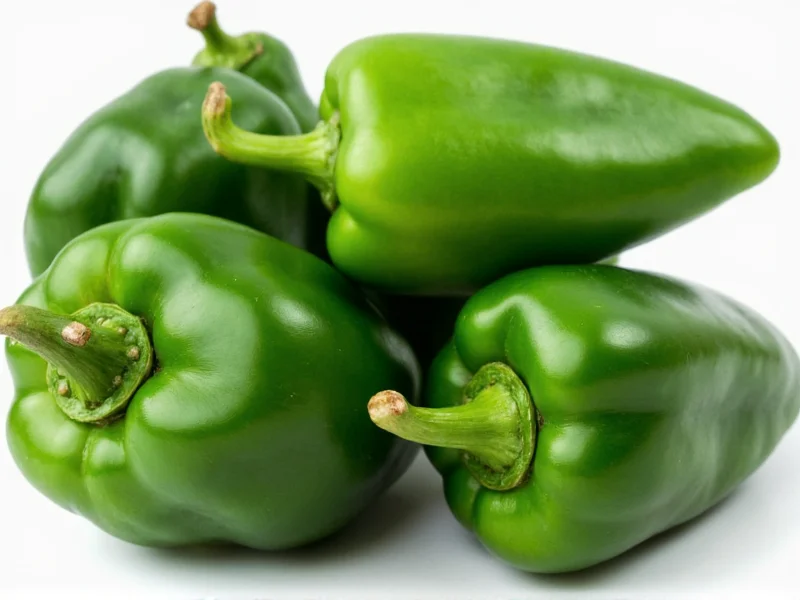When exploring is poblano peppers hot, the answer lies in their position on the Scoville scale. These large, dark green peppers deliver gentle warmth rather than intense fire, placing them among the mildest chili varieties commonly available. Understanding poblano pepper heat level helps home cooks confidently incorporate them into dishes without overwhelming spice.
Originating in Puebla, Mexico (where “poblano” means “from Puebla”), these peppers transform from mild green to sweeter, slightly hotter red versions called “anchos” when fully ripened. The heat primarily concentrates in the seeds and white membranes—removing these reduces spiciness significantly. This characteristic makes are poblano peppers spicy a nuanced question with practical solutions for heat control.
Understanding Poblano Pepper Heat Variability
Several factors influence how hot are poblano peppers in your kitchen:
| Factor | Effect on Heat Level | Practical Implication |
|---|---|---|
| Ripeness | Green poblanos: 1,000–1,500 SHU Red (ancho) poblanos: 1,500–2,000 SHU |
Ripe red versions deliver slightly more heat and sweetness |
| Seed and membrane removal | Reduces heat by 50–70% | Essential technique for mild hot peppers for cooking |
| Growing conditions | Drought-stressed plants produce hotter peppers | Same variety may vary between grocery stores |
| Individual pepper variation | Can range from nearly flavorless to jalapeño-level heat | Always taste a small piece before adding to recipes |
Poblano vs Other Common Peppers
Contextualizing poblano vs jalapeño heat helps manage expectations. While poblanos average 1,500 SHU, jalapeños range from 2,500–8,000 SHU. This means even the hottest poblano rarely exceeds the mildest jalapeño. Bell peppers (0 SHU) provide zero heat, while serranos (10,000–23,000 SHU) deliver significantly more fire.
Chefs value poblanos for their complex flavor profile—earthy with subtle fruitiness—that remains present despite mild heat. This distinguishes them from hotter varieties where capsaicin often dominates other flavors. When roasted, their skin blisters easily, creating the distinctive charred flavor essential to dishes like chiles rellenos.
Practical Handling Tips
Even with poblano pepper scoville units at mild levels, proper handling prevents discomfort:
- Wear gloves when seeding multiple peppers—capsaicin transfers easily to skin
- Wash hands thoroughly with soapy water after handling (alcohol-based sanitizers spread capsaicin)
- Remove seeds and membranes completely for the mildest results
- Test heat early by sautéing a small piece before adding entire batch to recipes
When substituting in recipes, remember that why are some poblano peppers hotter than expected often relates to growing conditions. If a recipe calls for mild heat but your poblanos test unusually spicy, balance with dairy (sour cream, cheese) or acid (lime juice) to counteract excess capsaicin.
Culinary Applications for Mild Heat
The moderate heat of poblanos makes them exceptionally versatile. Their thick walls hold up well to stuffing (chiles rellenos), while their flavor complements both traditional Mexican dishes and fusion cuisine. Try them in:
- Rajas con crema—sliced roasted poblanos in cream sauce
- Mole verde—blended into the signature green sauce
- Quesadillas—adds depth without overwhelming spice
- Stocks and soups—infuses subtle warmth throughout
For those exploring mild hot peppers for cooking, poblanos offer the perfect entry point—delivering authentic chili flavor with manageable heat. Their large size also makes them ideal for beginners learning pepper preparation techniques.
How hot is a poblano pepper compared to a jalapeño?
Poblanos measure 1,000–2,000 Scoville units, while jalapeños range from 2,500–8,000 units. This makes poblanos approximately 5–8 times milder than average jalapeños. Even the hottest poblano rarely matches the mildest jalapeño.
Can poblano peppers be hot sometimes?
Yes, individual poblano peppers can occasionally reach jalapeño-level heat (up to 5,000 SHU) due to growing conditions like drought stress. Always taste a small piece before using in recipes, and remove seeds/membranes for milder results.
Are poblano peppers hot when cooked?
Cooking doesn't reduce capsaicin content, but it does mellow the perceived heat. Roasting brings out poblanos' natural sweetness, making the mild heat (1,000–2,000 SHU) more balanced in finished dishes. The heat remains consistent whether raw or cooked.
Why do some poblano peppers taste different in heat?
Heat variation comes from growing conditions (water stress increases capsaicin), ripeness (red anchos are slightly hotter than green poblanos), and individual pepper genetics. Seed placement also affects heat—peppers with more seeds/membranes deliver stronger spice.
What’s the best way to reduce poblano pepper heat?
Remove all seeds and white membranes (placenta), which contain 80% of the capsaicin. Soaking sliced peppers in salted water for 30 minutes can further reduce heat. For cooked dishes, balance with dairy (sour cream, cheese) or acid (lime juice) to counteract spiciness.











 浙公网安备
33010002000092号
浙公网安备
33010002000092号 浙B2-20120091-4
浙B2-20120091-4